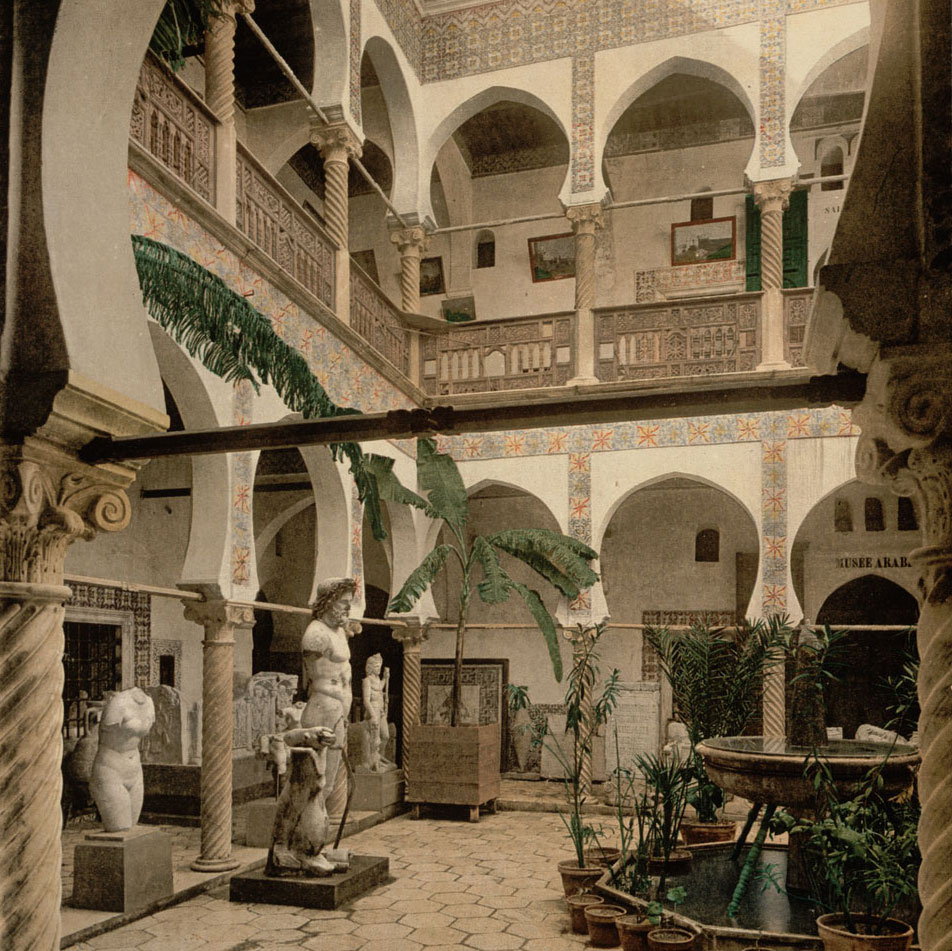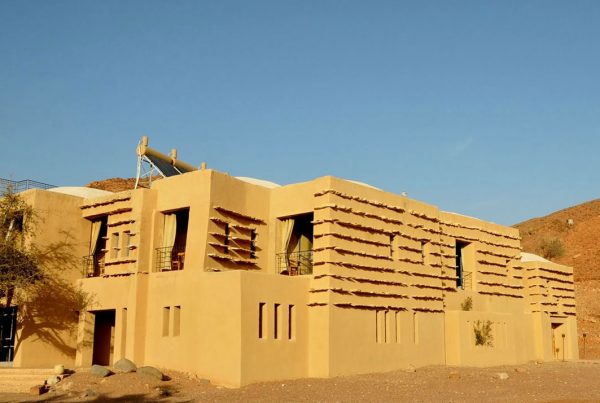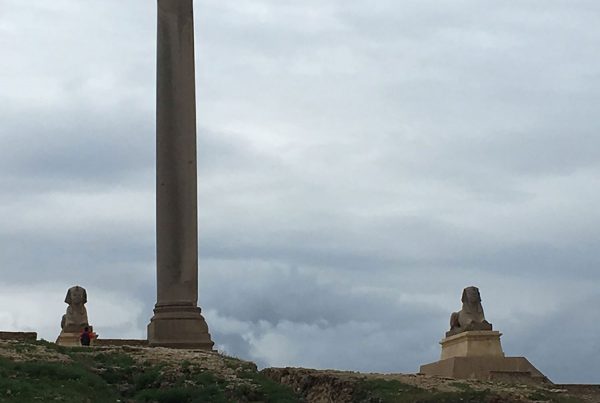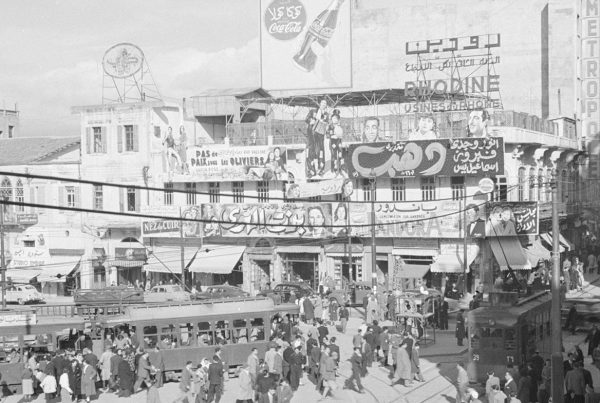Arabic Calligraphy is the incorporation of beautiful handwriting in the form of calligraphy and has been incorporated into religious ornaments and buildings for centuries. On the contrary, not all Arabic calligraphy is meant for religious purposes alone. The incorporation of Islamic or Arabic calligraphy into non-religious buildings comes off as a surprise to us. There are countless examples in history that have shown incorporation of Arabic Calligraphy into museums, libraries and secular buildings.
Algeria
The Museum of Antiquities in Musulman, Algeria is a building with a methodical classification of Arabic Calligraphy. Other Museums in Algeria with artistic mosaics of Arabic Calligraphy include the Museum of Popular Arts built in the 16th Century Ottoman Palace. The museum of Arabic Calligraphy in Cairo showcases the historic architecture of the Arabic Calligraphic Artefacts which in turn, enhances our appreciation of the old city. The cool deserted museum allows us to walk straight through the rooms taking in the exquisite works of Art.
The archaeological, ethnographic and natural history museums were set up in Libya by the Italians in 1934. The Libyan Arab Jamahiriya Museum designed by Architect Robert Mathew Johnson Marshall and funded largely by the UNESCO has intricate Arabic Calligraphy library collections as well as calligraphic indentations on its ancient walls and dome-shaped rooftops. Arabic Calligraphy is also practiced and has had a marked influence in the work of a number of Sudanese artists accompanied by geometric or floral designs in non-religious buildings.
Among the Arab countries, abstract art was most practiced in Tunisia and helped to push many Tunisians into the international arena. Najib Belkhodja adopted a critical attitude towards Arabic calligraphy and incorporated it into domes, arches and geometric forms. These were bound together by curved and angular shapes that recall the rhythm of knife script. Potteries at Tunisia and Nabeul, the largest ceramic center in Tunisia, have revived the 17th-century Andalusian style of wall tiles with their green, yellow and blue floral designs.
Tunisia
Dar Chaabane, near Nabeul, is the center for sculpted stonework with geometric floral designs in an intricate manner, engraved intricately on the buildings in North East Tunisia was carved here. The best-preserved Architectural remains of Arabic Calligraphy in Tunisian buildings are at Kerkouane in the Cap Bon Peninsula. Several of the sites have Arabic Calligraphy Museums, these include the rich architectural Museums at Nabeul, Sfax, Sousse and above all, the Musee National du Bardo, founded in 1888, containing one of the greatest collections of Arabic Calligraphy. Other Arabic Calligraphy Museums in Tunisia include Monastir (opened 1958), El Kaf (opened 1979), Gabes (opened 1969) and Houmt.
United Arab Emirates
The Heritage and Art Areas in Sharjah comprise several museums in the historic district. The Heritage Area contains the Sharjah Museum for the Art of Arabic Calligraphy and Ornamentation, several 19th-century houses, the traditional Esiah School, the Majlis of Ibrahim Mohammad al Midfaa, with a round wind tower and the Sharjah Museum for Contemporary Arab Art is the largest art museum in the Gulf. These secular buildings offer an exquisite and intricate permanent collection of Arabic Calligraphy paintings, exhibitions and carved indentations on their walls and domes. The Sharjah Archeological Museum (1996) also exhibits Arabic Calligraphy dating back to the pre-Islamic era in 5000 BC.
In Dubai, Al- Fahidi Fort (early 19th century) is the oldest building exhibiting intricate patterns of Arabic Calligraphy. Formerly the seat of government, it had been reopened in 1971 to house the Dubai Museum. It is built of plastered coral blocks and has been given an extensive face-lift. Forts of coral stones or baked mud also found in Fujayra, Ra’as al-Khayma and Ajman. The Monumental Sharjah or New Souk has with its blue-tiled roofs and wind towers, designed by the British Architects also showcases exquisite Arabic Calligraphy. In addition, it houses one of the first modern buildings in the MEA to use Arabic calligraphy with barrel-vaulted roof and “muqarnas” (niches).
Turkey
The Museum of Turkish and Islamic Arts in Turkey displays extraordinary manuscripts of Arabic Calligraphy from the Abbasid period in the late seventh century through the seventeenth century under Ottoman and Safavid rule. The Calligraphic elements varied in size, technique and lavishness form the best calligraphers in Istanbul.
The Museum of Islamic Art in Qatar and the National Museum of Sudan showcases fascinating and beautiful examples of Arabic calligraphy in its libraries, walls and entrance. The building of “Museum of Islamic Art” in Qatar has been built by the world-renowned architect I.M. Pei, a tribute to both its physical and cultural surroundings.
Museum Of The Future
The architectural engineering of Dubai Museum of the Future is quite complicated with eccentric geometrical pieces and fiberglass panels incorporated. To install the fine Arabic calligraphy cut-outs into the seven-storey building external artefact was a laborious task. In addition, the panels had to be melded to fit into the Calligraphic designs perfectly. Stainless steel was smothered over these fibre-glass panels and varnished to complete the look.
The painting pieces are distinctive as they amalgamate perfectly with the delicate calligraphy designs. The process of incorporating and installing these Calligraphic artefacts into the building is quite a time and labour intensive. For brainstorming the architectural structure, design, manufacturing and installation, digital and cutting-edge technology has been utilized.
Every measurement has been immaculately performed to develop the optimal shape, patterns and sizes of Arabic calligraphy. Parametric scripting is an architectural theme that integrates a balance between rapidly evolving parameters and fine geometry. Parametric scripting utilizes computer coding system and has been extensively employed in developing the architectural framework of the Museum of the Future.
Futuristic Engineering
All the architectural aspects of the Dubai Museum of the Future building, are well immersed in one another. Slight modifications to the Arabic Calligraphy letters can revamp the diagrid and MEP (Mechanical, Electrical and Plumbing architecture) of the building. A diagrid is a diagonal metallic or wooden structure incorporated into the roofs of buildings. While undergoing construction, the building, constant architectural modifications were made to the building.
From calculating equations to arranging panels and installing them, close architectural supervision was given. So far, the architectural designers have been able to strike the perfect balance in the amount of light that seeps into the Museum passing through these aesthetic calligraphic letters. Every panel has perfectly fit into the Arabic calligraphy, owing to the architectural genius and employment of cutting edge technology.
Modern and Traditional Arabic Calligraphic elements have been incorporated into these non-religious buildings in the MENA region. This shows that art in its every form is devoid of any religious limitations. There is room for the thought that Arabic calligraphy should not remain constrained to religious buildings only but incorporated into the Architecture world.










